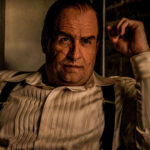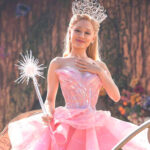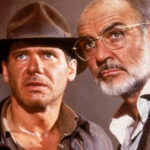

Walt Disney is one of the most iconic names in entertainment history. Known for creating an animation empire that brought beloved characters like Mickey Mouse, Donald Duck, and many others to life, Disney was a pioneer who transformed the world of cinema and pop culture. In addition to his innovative films, he was the visionary behind the theme parks that redefined the concept of family fun.
But behind the magical legacy and enchanting productions, there are many curiosities that few people know. From his early experiences with animation to the challenges he faced in building his global brand, Walt Disney was a figure full of surprises.
In this text, we will explore some of the most interesting curiosities about his life, his achievements, and the lessons we can learn from his entrepreneurial and creative spirit.
1 – HE BELIEVED HE WAS AN ADOPTED CHILD
Walt Disney was born on December 5, 1901, in Illinois, USA. As a teenager, Walt Disney discovered that he did not have a birth certificate. This led him to believe that he might have been adopted.
2 – DISNEY ALWAYS LOVED TO DRAW
From a young age, Walt had a great passion for drawing. He would spend hours in the woods, observing animals, and then depicting them in his sketchbook.
3 – HE DROPPED OUT OF SCHOOL
In 1923, Walt moved to Los Angeles to join his older brother, Roy, and pursue a career in animation. Roy was selling vacuum cleaners door-to-door to help pay the bills and encouraged Walt to do the same.
Although Walt considered the idea, before he could get involved in a dead-end scheme, he received a call from a New York company interested in hiring him to produce short films.
4 – DISNEY COMPANY
In 1922, before founding the Disney Company, Walt Disney created Laugh-O-Gram Films, a company that produced successful short films based on fairy tales. However, production costs eventually exceeded the revenue generated, and the company went bankrupt just a year later.
5 – BANKRUPT COMPANY AND THE COMEBACK
After the bankruptcy, Walt Disney faced a financially struggling company. He had two options: produce a film or sell the company. He chose to make the film “Cinderella,” which became a success and ensured the company’s continuity.
6 – THE CREATION OF MICKEY MOUSE
Walt Disney created Mickey Mouse in 1928 during a crucial moment in his career. After losing the rights to his first successful character, Oswald the Lucky Rabbit, to Universal Studios, Walt and his studio desperately needed a new character. During a train ride from New York to Los Angeles, he came up with the idea of a mouse. With the support of his long-time partner, animator Ub Iwerks, the design for Mickey was created.
Initially, the character was to be named “Mortimer Mouse,” but Walt’s wife, Lillian, suggested a friendlier name: “Mickey”. Walt agreed, and thus was born the mouse who would become one of the most iconic characters in animation history.
Mickey’s first appearance was in the animated short film “Steamboat Willie” (1928), which was also one of the first films to synchronize sound and image effectively. The success of “Steamboat Willie” catapulted Mickey Mouse to stardom and marked the beginning of a new era in animation, solidifying Disney’s reputation as a studio of creative innovation. Walt Disney, who also voiced Mickey’s original character, used him to build the Disney empire we know today.
7 – “SILLY SYMPHONIES”
Walt Disney introduced Technicolor, a color technology still used in films today, to the production of the “Silly Symphonies” series, short cartoons of about 7 minutes each that remain absolute classics, such as “The Three Little Pigs” (1933) and “The Ugly Duckling” (1939).
8 “SNOW WHITE AND THE SEVEN DWARFS”
“Snow White and the Seven Dwarfs” (1937), Disney’s first full-length animated feature, is a milestone in film history. To create the film, Disney took out a loan from the bank where his brother worked. If it failed, the entire family would be in debt.
Walt Disney had the idea of turning the Brothers Grimm fairy tale into a feature film in the mid-1930s. At the time, many believed that a full-length animation would not be successful, calling the project “Disney’s folly”. However, Walt believed that an animated feature could be as thrilling as any live-action film. Walt Disney often said, “I love the impossible, as the competition there is less”, and what he achieved with Snow White in the 1930s truly seemed impossible.
Disney and his team developed the story through a process of “storyboarding”, where each scene was drawn on panels and displayed on a wall. This method allowed the team to visualize the entire film before starting animation. They adjusted the story several times, including adding humorous and emotional scenes to balance the dark tone of the original tale.
The animation was done by hand, frame by frame, by Disney Studios’ animators. Over 1.4 million drawings were used, including 250,000 final drawings and 900,000 preliminary sketches. The animators went through an intensive process of studying characters, movements, and expressions to ensure each character had its own personality. For example, each dwarf had distinct traits and characteristics, from the way they walked to how they spoke.
The film also innovated by using voice actors to bring animated characters to life, a relatively new concept at the time. The voices were carefully chosen to match each character’s personality. The soundtrack, composed by Frank Churchill, Larry Morey, Paul J. Smith, and Leigh Harline, included iconic songs such as “Heigh-Ho” and “Someday My Prince Will Come”.
The film premiered on December 21, 1937 and was a critical and commercial success, earning millions of dollars worldwide.
9 – WALT DISNEY IN WORLD WAR II
During World War II, Walt Disney began working with the FBI. With the United States entering the conflict, Disney was requested by the Armed Forces to create training animations for soldiers. Later, he also began producing military propaganda films, primarily using his most famous characters.
10 – LIVE-ACTION FILMS
Walt Disney did not limit himself to animation alone. His first live-action feature was “Treasure Island” (1950). The first nature film was “The Living Desert” (1953), and in 1954, he released “20,000 Leagues Under the Sea”, based on the work of French author Jules Verne.
A decade later, Walt Disney created “Mary Poppins”, which combined animation with live-action characters. The film was nominated for 14 Academy Awards, winning five, including Best Actress for Julie Andrews and Best Original Song for “Chim Chim Cher-ee”. In addition, Disney produced several television films and also hosted his own show.
11 – DISNEYLAND
In 1955, Disney achieved one of his greatest successes by opening Disneyland, a massive amusement park located in Anaheim, California. The construction of the park was made possible through a collaboration with the ABC television network.
Disney took a break from producing the classic “Sleeping Beauty” to build the park, and in 1959, he released the princess film in theaters, which became one of the highest-grossing films of that year.
12 – DISNEY PLAYED PETER PAN IN THE CINEMA
The story of Peter Pan always held a special place for Walt Disney. For him, it was not just a successful film in 1953, but also a return to his childhood. After watching Peter Pan in the theater, young Walt decided to portray him in a school performance.
Later, he recalled that his brother Roy was responsible for lifting him with a rope to simulate flight—one of the many creative collaborations between the two.
13 – WALT MADE SURE TO TAKE HIS DAUGHTERS TO SCHOOL
Despite having drivers, a housekeeper, and several other staff members at his disposal, Walt Disney greatly valued the routine of taking his two daughters to school every day. He was also extremely indulgent with them, which historian Steve Watts believes was a reaction to the strict educational style Walt himself had received.
14 – HE DIDN’T RELAX BY PLAYING GOLF
For many, golf is seen as a relaxing sport (and associated with the elite), but for Walt Disney, it was a source of frustration. After spending a morning playing golf and becoming so annoyed, he decided to switch to another activity: lawn bowling.
15 – DISNEY FELT GUILTY FOR HIS MOTHER’S DEATH
When he became famous, Walt Disney decided to give his parents a grand gift: buying them a new house. Whenever his parents needed any kind of service, whether repairs, renovations, or construction, he sent his own studio employees to handle the situation. In 1938, a problem arose with the oven in the house.
Unfortunately, the team did not address the issue correctly, and Flora Call Disney passed away from carbon monoxide poisoning at the age of 70. His father, Elias, also became seriously ill from the gas leak but managed to recover.
Walt’s daughter, Sharon, reported that many years later, Walt remained reserved and avoided talking about the incident.
16 – LAST WORDS ON A PIECE OF PAPER
Shortly before his death, Disney wrote “Kurt Russell” on a piece of paper. This note was found on his desk and, according to historian Dave Smith, was among Disney’s last notes. At that time, Russell was a relatively unknown child actor at the studio. To this day, no one knows exactly what Walt intended with that note, not even Kurt Russell.
17 – THE LAST WORK
During World War I, Walt Disney developed the habit of smoking, an addiction that unfortunately had serious consequences for his health. In 1966, he was diagnosed with lung cancer, a disease that led to his death in December of that year, at the age of 65.
Before he passed away, Walt was involved in the production of his next animation, “The Jungle Book”, which would not be officially released until 1967, without him seeing the film fully completed. Although he did not live to see the finished film, Disney is still credited in the animation’s end credits, marking his final work.
18 – DID WALT DISNEY ASK TO HAVE HIS BODY FROZEN?
According to legend, after discovering he had an incurable illness, Disney supposedly requested that his body be cryogenically frozen until a cure could be found. However, this wish was never realized.
19 – OSCAR RECORD
Walt Disney was nominated for an Oscar more than 60 times and won an impressive total of 26 awards, primarily for his animated shorts.
20 – THE DEATH OF WALT DISNEY
Walt Disney passed away on December 15, 1966, at the age of 65, in Los Angeles, California, due to cancer. His brother, Roy, took over the leadership of the business and continued in charge until after the completion of the Magic Kingdom’s construction and the opening of Walt Disney World in 1968, when he also passed away.
Walt Disney was a true visionary, whose influence still resonates around the world. His innovations in film and animation, such as the creation of the first full-length animated feature, “Snow White and the Seven Dwarfs”, transformed the industry and delighted generations. Disney was also a pioneer in technology and storytelling, always seeking ways to push boundaries and create unforgettable experiences for audiences.
His ability to dream big and bring those dreams to life through theme parks and iconic characters is a testament to his creativity and determination. Although his life was marked by challenges and controversies, Disney’s legacy continues to inspire and entertain millions of people worldwide.
The magic he brought to life through his films and parks is a lasting reminder that imagination can indeed change the world.








